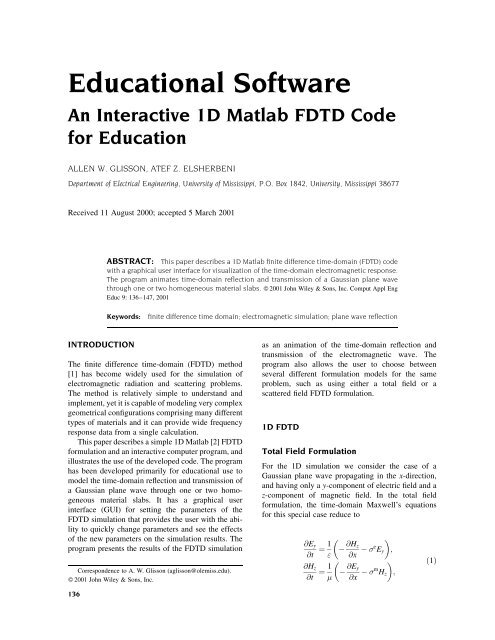

An extensive Matlab (or Octave) interface is used to define the FDTD options. The development was started in February 2010 and is written in C++.

FDTD MATLAB FREE
Fan, “Choice of the perfectly matched layer boundary condition for frequency-domain Maxwell's equations solvers,” Journal of Computational Physics, vol. 231, pp. OpenEMS is a free and open source EC-FDTD solver. FDTD: One-dimensional, free space E-H formulation of Finite-Difference Time-Domain method. You are welcome to cite the following paper about the techniques used in MaxwellFDFD: The output parameters E and H are the solution E- and H-fields of the simulation. 'SRCJ' (source): the electric current source in the simulation domain 'OBJ' (object): the materials and shapes of the objects in the simulation domain 'DOM' (domain): the material and size of the simulation domain 'OSC' (oscilation): the length unit (1 nm) and free-space wavelength (1550 nm) as a Matlab-like environment for writing algorithms for solving PDEs.
FDTD MATLAB CODE
The meaning of the input parameter groups used in the code is as follows: A 3D electromagnetic FDTD simulator written in Python Incoherent Light Simulation. Useful for helping students to visualize reflection, transmission, wave velocity and impedance concepts. MaxwellFDFD is a MATLAB-based package that solves the frequency-domain Maxwell's equations A simple one-dimensional finite-difference time-domain (FDTD) electromagnetic routine that allows the user to specify arbitrary permittivity, permeability and conductivity profiles.


 0 kommentar(er)
0 kommentar(er)
